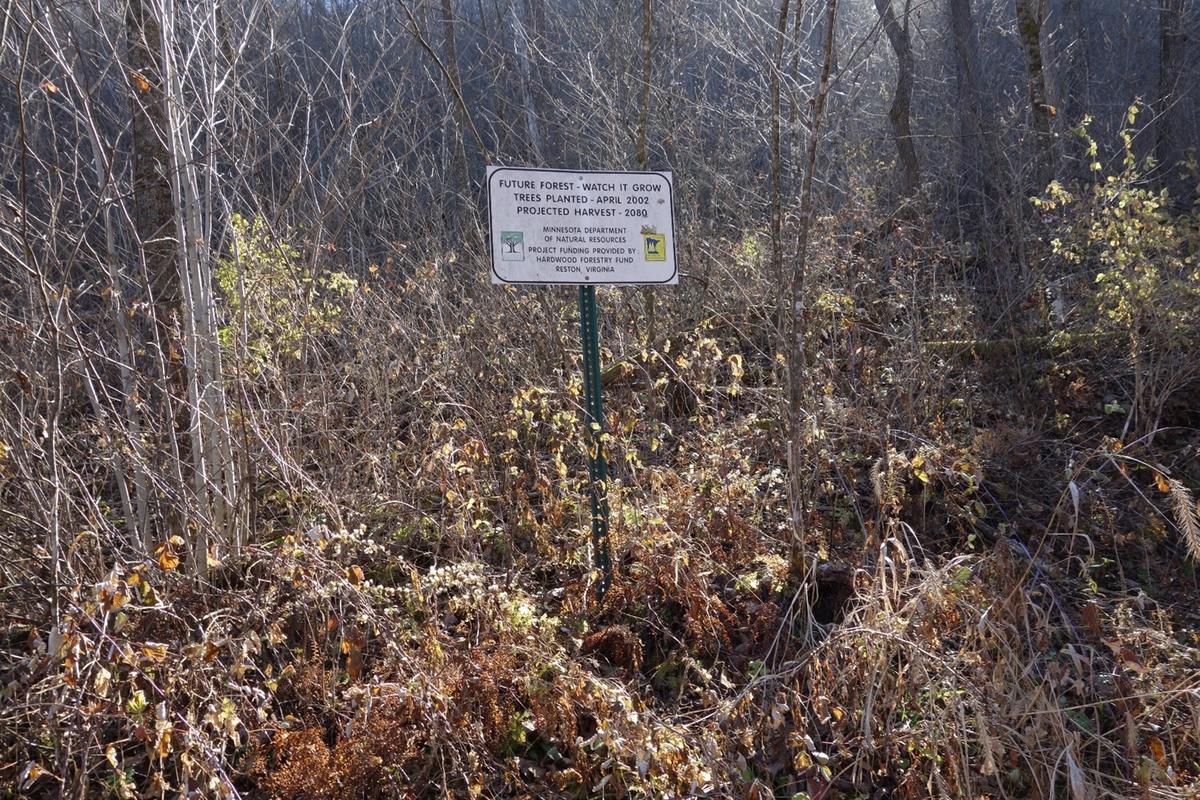Overview
In Minnesota DNR’s Lewiston forestry administrative area, a common prescription for regeneration of mature oak stands has been to underplant oak seedlings before a regeneration timber harvest. We wanted to do an assessment of how well the practice had met oak regeneration objectives by gathering current data on several sites that had been underplanted with oak. This study is an assessment of oak regeneration and overall stand condition in 2021 (19 years after planting and harvest) for one of those sites.
Background on typical oak regeneration through pre-harvest underplanting prescription:
- Seedlings have been planted prior to harvest (instead of after) because:
- They become established for a year or two, helping them be better able to grow and compete with other vegetation after exposure of the site to full sunlight post-harvest.
- It is extremely difficult and expensive to plant seedlings after a harvest, with heavy amounts of slash on the ground.
- Other species such as black walnut are mixed into plantings as appropriate for the site.
- Most often, the harvest prescription has been a clearcut with reserves, although there have also been some shelterwood harvests.
- Damage to underplanted seedlings during harvesting activity is usually modest. The young stems are pretty flexible and most often survive being run over by a skidder by bending but not breaking. Those that do break off generally resprout and exhibit the rapid juvenile growth associated with sprout origin stems.
- Crop tree release of desirable young regeneration, along with thinning of oak stump sprout clumps has typically been accomplished 8 to 15 years after the harvest.
Two interesting questions are raised by the study. We have postulated some potential reasons in the study. We don’t have conclusive answers to either, so more case studies and research is needed for both:
Deer browse: Why is more oak regeneration growing past deer browse height on this site than on a number of other, seemingly similar sites?
Vegetative competition: Why did more underplanted oak regeneration survive and grow past early vegetative competition on a number of other, seemingly similar sites?
Silviculture Objectives
1) Regenerate a mature oak stand to a young stand of similar composition.
2) Maintain and improve wildlife habitat with a strong component of oak trees in the new stand. Oak forests provide habitat for numerous wildlife species. One of oaks’ most important contributions to wildlife is mast, or acorns which can be an important seasonal food source.
3) Improve timber quality and value. A good component of healthy, well-formed oaks and other fine hardwoods will help ensure high timber value at harvest time.
Pre-treatment stand description and condition
Stand establishment and management history
Most of the mature oak stands in southeastern Minnesota at the time of project initiation in 2002 originated after control of regular fires after European settlement.
The stand was part of a privately owned farmstead until the state obtained it in the 1970s, so it probably had a history of use as a woodlot and wooded pasture prior to state ownership.
Pre-treatment species composition
Table 1: 2002 Timber sale appraisal of volume of non-reserved merchantable trees with stems greater than 12 inches DBH
Species and Product | Volume (Thousand Board Feet) |
Red Oak Sawlogs and Veneer | 89.87 |
White Oak Sawlogs | 5.32 |
Elm Sawlogs | 3.32 |
Basswood Sawlogs | 1.89 |
Black Walnut Sawlogs | 1.09 |
Aspen Sawlogs | 0.69 |
Hickory Sawlogs | 0.59 |
Cottonwood Sawlogs | 0.40 |
Paper Birch Sawlogs | 0.32 |
Black Cherry Sawlogs | 0.04 |
Total: | 103.48 |
Pre-treatment forest health issues
Nothing of note.
Landowner objectives/situation
While specific objectives vary from parcel to parcel, lands under the administration of DNR-Forestry are managed in alignment with Section Forest Resource Management Plans (SFRMP) to ensure that state forest management activities meet statewide goals for ecological protection, timber production, wildlife habitat and cultural/recreational values. The DNR assembles teams from the Divisions of Forestry, Fish & Wildlife, and Ecological & Water Resources who work with partners and the public to develop SFRMPs.
The Minnesota DNR goal for oak forest acreage at the time of project initiation was to maintain as much of it as possible through regeneration of mature stands.
Silviculture prescription
The following series of treatments were implemented:
Treatment | Date | Description | Acres Treated |
Silvicultural assessment and timber sale appraisal | 2001 | Timber was appraised for sale, data was obtained on stems of existing regeneration, and the stand was assessed to determine a silvicultural strategy. | NA |
Underplanting | Spring 2002 | Bare root seedlings were hand underplanted prior to anticipated harvest at approximately 12’ x 12’ spacing. Target density was approximately 300 stems/ acre. Records do not indicate whether the species mix was totally random across the site, or whether species were somewhat targeted for certain portions of the site. Species:
| 14 |
Clearcut with reserves harvest | 2002 | Trees greater than 12 inches DBH were harvested in a commercial clearcut with reserves harvest. Scattered trees and patches of larger bur, white, red and black oak and black walnut reserved for mast production as a seasonal wildlife food source, to provide den and roost trees, and also as a seed source for regeneration. Note: A bulldozer was used for skidding, which may have resulted in superior site-scarification for acorns, and understory vegetative control on portions of the site. Season of harvest: Some harvesting was done in the fall, and some during the winter. | 18 |
Post-sale killing of undesirable competing trees | 2003 | Stems of undesirable competing trees (boxelder, elm and ironwood) were killed by girdling with a chainsaw, and applying Tordon herbicide to the girdle wound. | 18 |
Crop tree release and oak sprout clump thinning | 2014 | Crop tree release: Release from competing woody vegetation up to 150 well-formed, desirable hardwood crop trees (3’ and taller)/acre. In order of crop tree preference, desirable species of the following released: Walnut, Oak, Shagbark Hickory, Bitternut Hickory, healthy Butternut, Cherry, Hackberry, Sugar Maple, Silver Maple, Kentucky Coffeetree, Basswood, Cottonwood, Paper Birch, and Aspen. Mast producing species take priority over non mast trees. Sprout thin: Mechanically cut stump sprout(s) of Crop Trees to the one best formed sprout near the base of the stump. | 18 |
Invasive species control | 2014 | Treat the following invasive exotics/non-desirable species with herbicide: all buckthorn, black locust, honey locust, multiflora rose, amur maple (ginnala), and non-native honeysuckles taller than 3’ tall, barberry taller than 2’, Oriental bittersweet and grape vines 1” diameter and larger. | 18 |
What actually happened during the treatment
The 2014 crop tree release was initially planned for 2011 or 2012, but was delayed until 2014 due to lack of funding.
Otherwise, as far as current forestry staff is aware, everything went pretty much according to plan with the harvests, planting, post sale removal, and crop tree release.
Post-treatment assessment
The silvicultural prescription of pre-harvest underplanting, a clearcut with reserves harvest, and crop-tree release 12 years after harvest has been successful at establishing desirable hardwood regeneration with good oak and black walnut components on this site
Regeneration
19 years after initial treatment, there is a mixture of desirable hardwood regeneration that is a good ecological fit for the site, including good oak and black walnut components (Table 2). Many of these seedling and sapling stems are above deer browse, with some clearly at “free to grow” status. In addition to the oak and walnut, there is a significant amount of other desirable hardwood species regeneration, including black cherry, basswood, shagbark hickory, hackberry, and (on some parts of the site) sugar maple. Including all crop trees, the site meets the MNDNR 15-year regeneration standard, which is: A minimum of 100 to 200 crop trees per acre with 75% of plots in “free-to-grow" condition. Additional species present include elm, aspen, paper birch, boxelder, and ironwood.
The origin of the oak regeneration is a combination of planted and natural seedlings, and also some sprouts. It is difficult to conclusively tell the difference between planted and natural oak after 19 years, but there were places where we could ascertain a row pattern of the trees, indicating the planting origin of at least some of the oak and much of the black walnut regeneration.
This 19 year old stand is well on its way to reaching species composition objectives: a mixed hardwood stand with a good component of healthy oak and black walnut, with high timber and wildlife value. Foresters will continue to monitor and assess the site over time. They will have good options to adjust species mix as desired through future crop tree release/thinning treatments.
Table 2: Regeneration stems/acre and plot frequency by species and size class in 2021
Size Class | < 1’ tall | ≥1’ tall and < 1” DBH | 1” to 3” DBH | 3” to 5” DBH | ||||
Species | Stems/ Acre | Freq | Stems/ Acre | Freq | Stems/ Acre | Freq | Stems/ Acre | Freq |
Aspen | 0 | 0% | 0 | 0% | 0 | 0% | 45 | 15% |
Basswood | 50 | 5% | 200 | 15% | 25 | 5% | 40 | 20% |
Bitternut Hickory | 0 | 0% | 0 | 0% | 0 | 0% | 5 | 5% |
Black Cherry | 50 | 5% | 100 | 10% | 50 | 5% | 25 | 25% |
Black Walnut | 0 | 0% | 50 | 5% | 100 | 20% | 45 | 20% |
Boxelder | 50 | 5% | 50 | 5% | 0 | 0% | 10 | 5% |
Bur Oak | 0 | 0% | 50 | 5% | 0 | 0% | 0 | 0% |
Elm | 850 | 35% | 3,300 | 75% | 225 | 30% | 30 | 20% |
Hackberry | 0 | 0% | 50 | 5% | 0 | 0% | 5 | 5% |
Ironwood | 0 | 0% | 25 | 5% | 0 | 0% | 0 | 0% |
Paper Birch | 0 | 0% | 0 | 0% | 0 | 0% | 10 | 5% |
Red Oak (Seedling) | 250 | 15% | 300 | 25% | 100 | 15% | 70 | 40% |
Red Oak (Sprout) | 0 | 0% | 0 | 0% | 0 | 0% | 15 | 10% |
Shagbark Hickory | 50 | 5% | 200 | 10% | 0 | 0% | 5 | 5% |
Sugar Maple | 0 | 0% | 50 | 5% | 50 | 10% | 5 | 5% |
White Oak | 250 | 10% | 450 | 10% | 150 | 15% | 5 | 5% |
Total Stems/Acre | 1,550 |
| 4,825 |
| 700 |
| 360 |
|
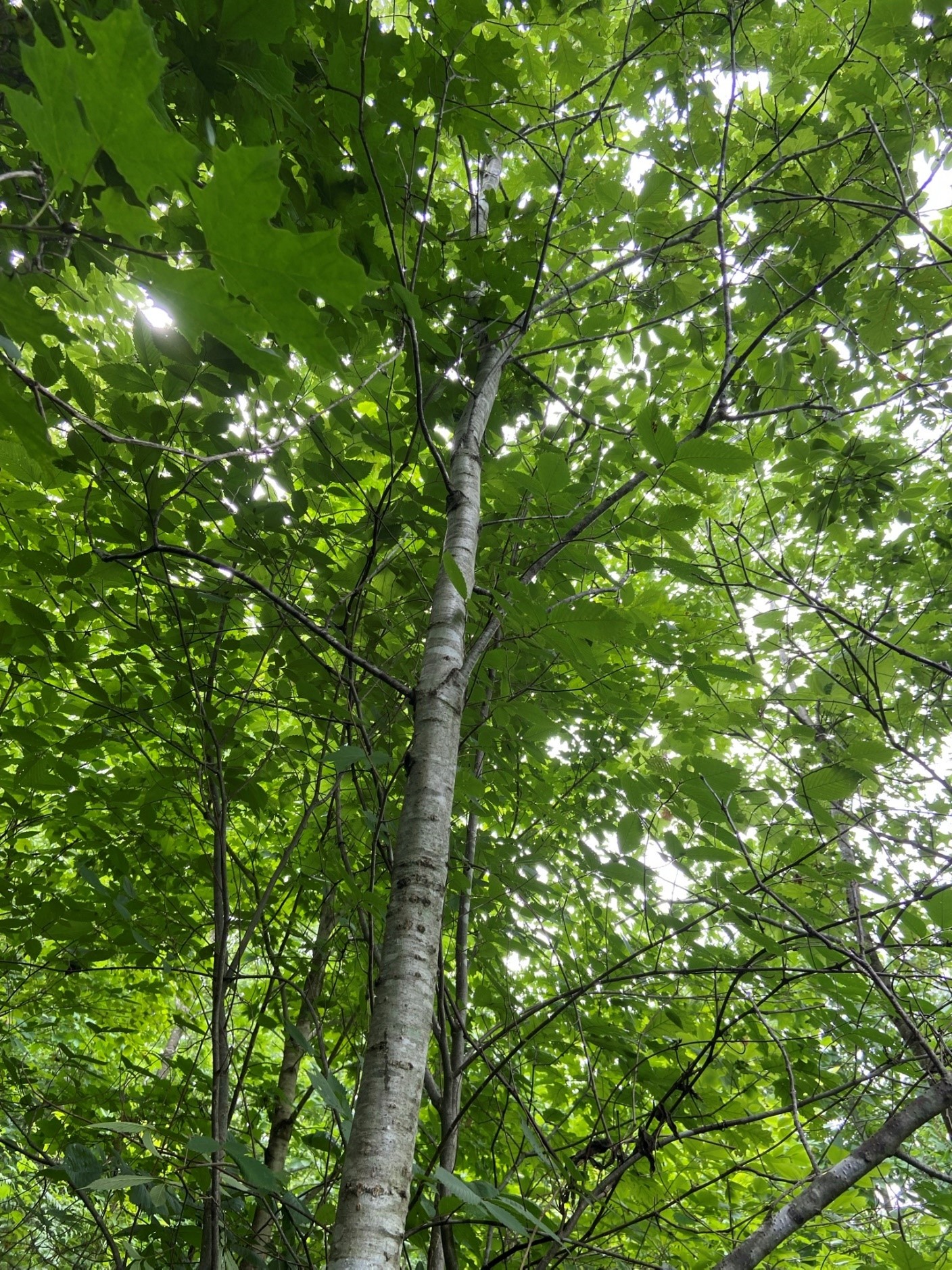
Figure 1: Looking up at a healthy oak sapling stem in summer 2021
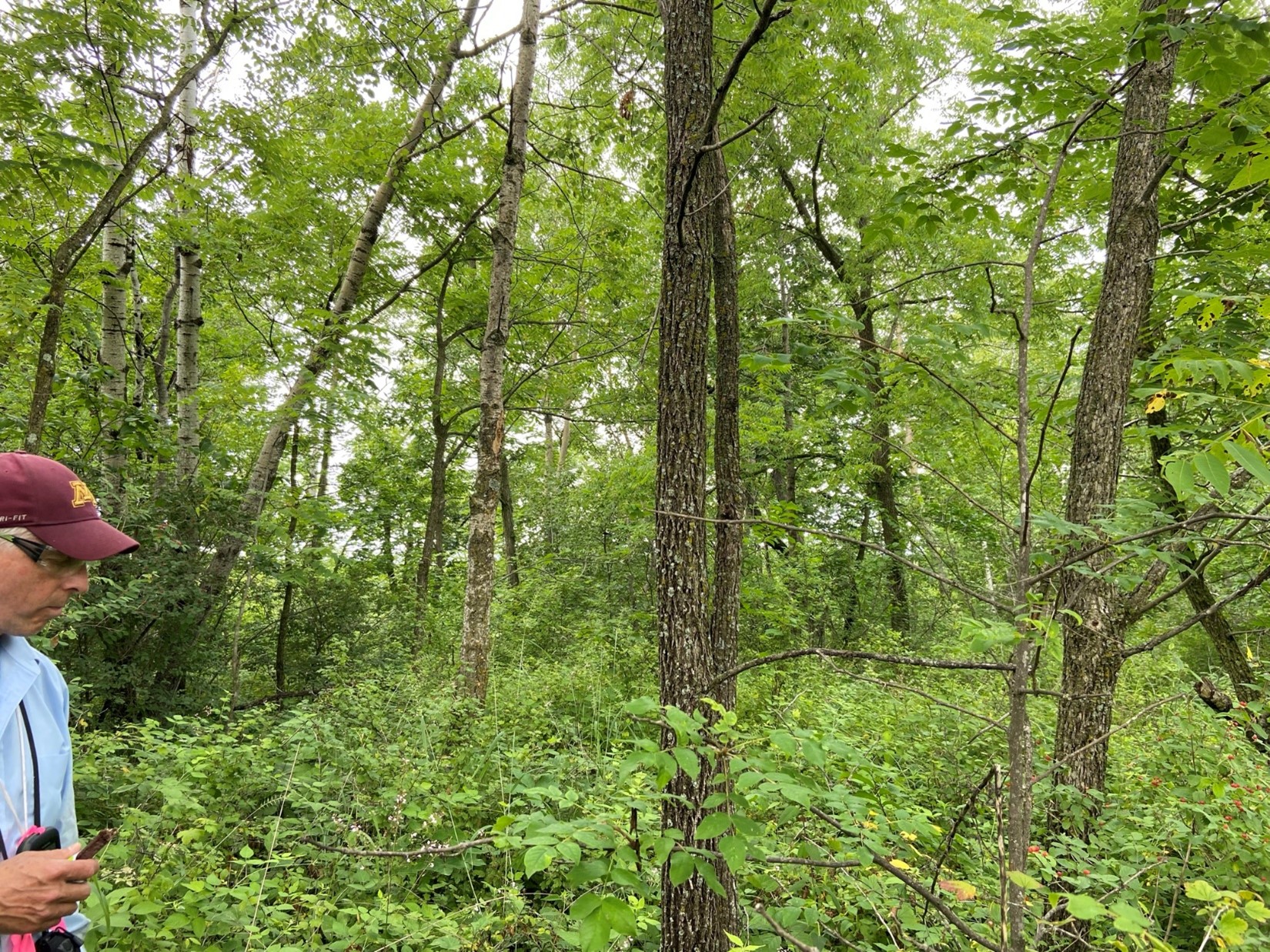
Figure 2: 4 to 5 inch DBH planted black walnut regeneration in summer 2021
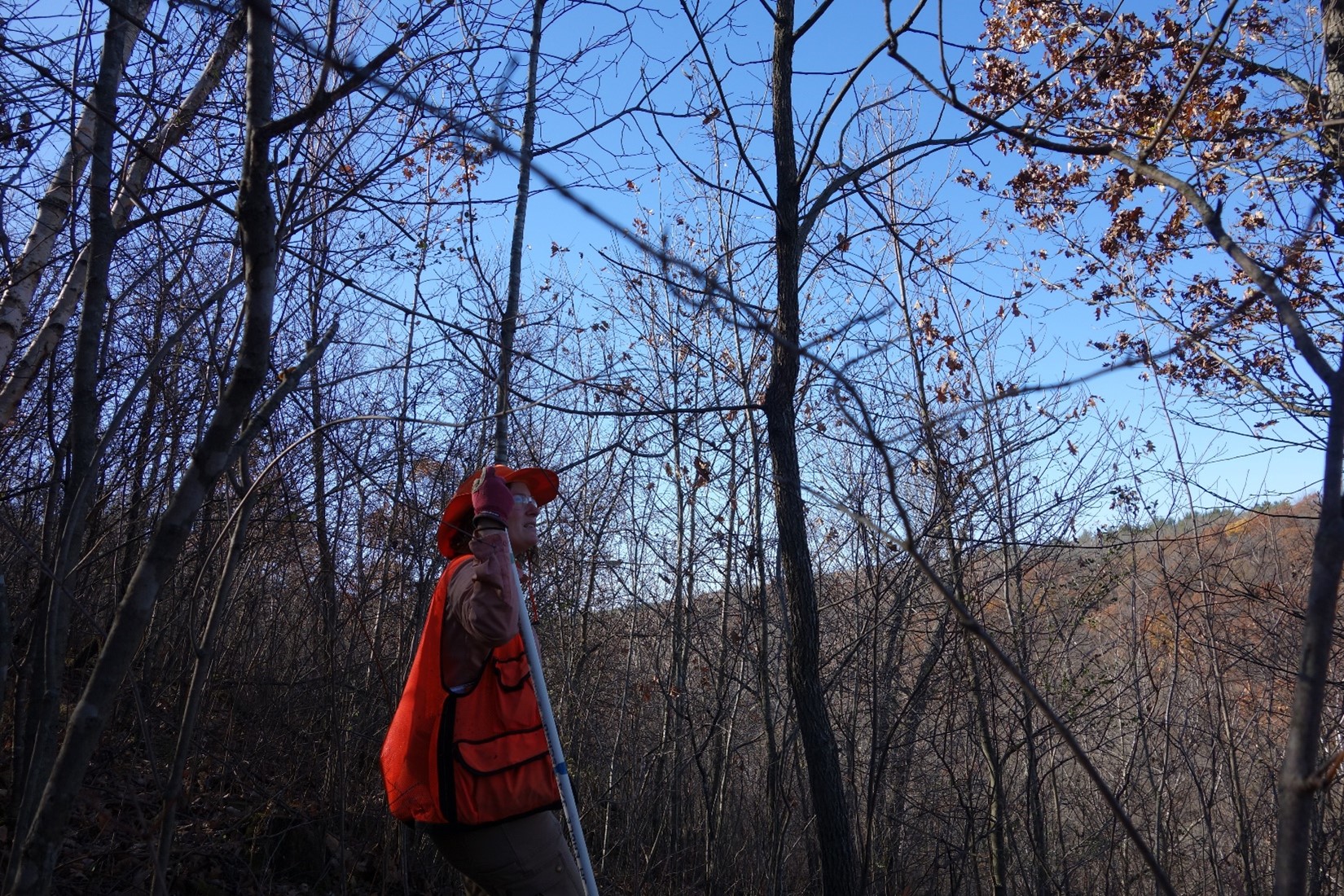
Figure 3: Michelle Martin among regenerating mixed hardwood stems in fall 2020
Two interesting questions are raised by the regeneration on this site, related to two of the biggest challenges to consistent oak regeneration: 1. deer browse, and 2. early vegetative competition.
Deer Browse: Why is more oak regeneration growing past deer browse height on this site than on a number of other, seemingly similar sites?
There has clearly been significant deer browse damage on at least one section of this site (see Figure 4). However, on much of the stand adequate numbers of oak seedlings and saplings are in the process of reaching heights where they are above deer browse level. It is possible that deer hunting pressure is higher than on most other state land sites, resulting in lower deer populations than normal.
However we should note that most DNR-administered state forest lands receive considerable hunting pressure. So while this area is probably on the higher end of hunting pressure, it is also not completely unique in that regard. Or, lower-than-normal deer predation might be related to other unknown factors. One good research opportunity moving forward might be to obtain historical deer population data and try to assess oak regeneration results compared to local deer populations at treatment time.
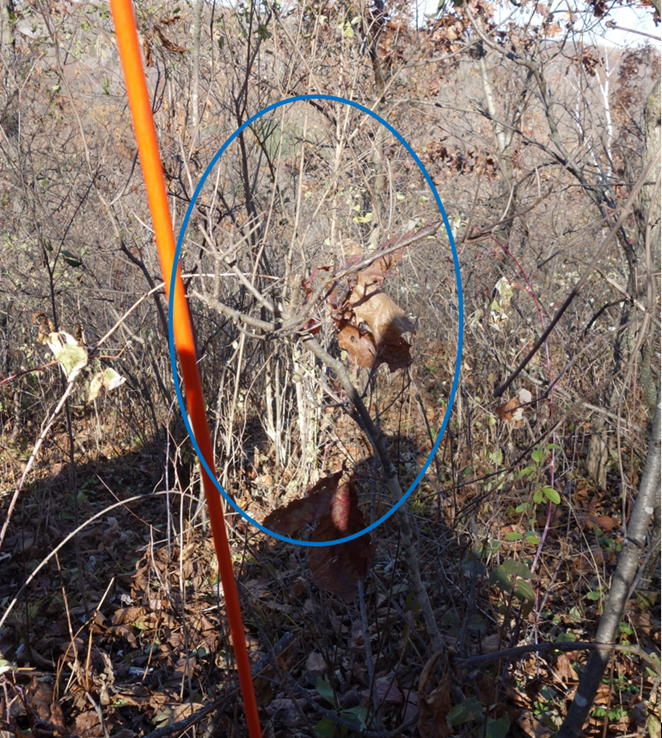
Figure 4: Heavily browsed oak seedling in one section of the site in fall 2021. Although there was some browsing damage as seen here, many oaks have grown above the browse line and were “free-to-grow” as of 2021.
Vegetative competition: Why did more underplanted oak regeneration survive and grow past early vegetative competition on this site than on a number of other, seemingly similar sites? Clearly, some of the initially established oak regeneration succumbed to shade from competing vegetation in the first few years after planting and harvest, before follow-up crop tree release work was done in year 12. However, on over half of the site adequate numbers of oak seedlings and saplings are in the process of reaching heights above competing vegetation.
Part of the reason must have been good oak planting stock in 2002. MNDNR has struggled to obtain consistently good oak seedlings, with some years having very poor initial survival immediately after planting due to poor stock. However, there are plenty of sites that have been planted with good oak seedling stock where seedlings have been out-competed by heavy early vegetative competition, so that can’t be the entire answer here.
Other possible factors may have been superior preparation through soils disturbance and competition control due to the use of a bulldozer for skidding, and fall (non-frozen condition) harvest on part of the site.
Residual overstory* trees
We were most interested in regeneration for this study, so residual overstory trees are not a major part of the story here. However, we want to include data on residual overstory trees to give a full picture of site conditions. The data in Table 3 shows basal area of residual* tree stems in the study area.
*NOTE: The DBH size classes we used for data collection are helpful, but not perfect for distinguishing post-harvest regeneration from harvest residuals. This is because the 5”-10” DBH class contains both post-harvest regeneration and some harvest residuals.
Table 3: Basal Area (ft2/ac.) of Trees > 5” DBH by Species and Diameter Class
| Diameter Class |
| |||
Species | 5-10” DBH | 10-15” DBH | 15-20” DBH | >20” DBH | Total |
Basswood | 0.7 | 0.0 | 0.0 | 0.0 | 0.7 |
Bigtooth Aspen | 2.1 | 0.0 | 0.0 | 0.0 | 2.1 |
Black Cherry | 0.3 | 0.0 | 0.0 | 0.0 | 0.3 |
Black Walnut | 3.4 | 0.3 | 3.4 | 0.7 | 7.8 |
Bur Oak | 0.0 | 0.3 | 0.0 | 0.0 | 0.3 |
Elm | 0.3 | 0.0 | 0.0 | 0.0 | 0.3 |
Red Oak | 1.0 | 1.0 | 1.4 | 0.0 | 3.4 |
Shagbark Hickory | 1.4 | 0.7 | 0.0 | 0.0 | 2.1 |
White Oak | 0.3 | 1.0 | 0.7 | 0.0 | 2.0 |
Total | 9.5 | 3.3 | 5.5 | 0.7 | 19 |
Understory Plants
We did not record an understory plant list for this site, but the species we observed while on site were common to the plant communities.
Invasive Species
Woody invasive species were treated with herbicide during the crop tree release treatment in 2014.
Buckthorn: There is currently little buckthorn on this site. We found a few small stems on 10% of our plots.
Japanese barberry: We found Japanese barberry at low density on only 5% of our plots.
Plans for Future Treatments
Monitor the stand through periodic inventory surveys. Harvest and regenerate the stand when it is chosen by the planning process. Control invasive species if necessary.
Foresters are considering another crop tree release due to the abundance of small oak present, but no decision has been made on this as of October 2023.
Costs and economic considerations
COSTS
Underplant seedlings: $ 127.00/acre (2002 dollars)
Post-sale TSI?: $ 65.00/acre (2003 dollars)
Crop tree release $ 209.70/acre (2013 dollars)
Total Costs $ 401.70/acre (2002, 2003 and 2013 dollars)
REVENUE
2002 harvest: $ 1,658/acre (2002 dollars)
Total Revenue: $ 1,658/acre (2002 dollars)
Other notes
We had review and editing help from MNDNR’s Silviculture Program Consultant Mike Reinikainen.
Summary
The silvicultural prescription of pre-harvest underplanting, a clearcut with reserves harvest, and crop-tree release 12 years after harvest has been very successful on this site
In 2021, 19 years after initial treatment, there was a mixture of desirable hardwood regeneration that is a good ecological fit for the site, including very good oak and black walnut components. Many of these seedling and sapling stems are above deer browse and at “free to grow” status.
This stand is well on its way to reaching species composition objectives: mixed hardwoods with good oak and black walnut components, with high timber and wildlife value.
The crop tree release work 12 years after harvest was critical for allowing oaks and other desirable shade-intolerant species to survive and thrive
Crop tree release work was accomplished with special funding for habitat enhancement obtained from the Lessard-Sams Outdoor Heritage Fund.
We aren’t sure why more oak regeneration is growing past deer browse height on this site than on a number of other, seemingly similar, sites
No browse protection practices were employed on the site, yet a significant amount of oak regeneration has reached heights above deer browse levels.
We think a worthy subject for future research might be to obtain historical deer population data to see if anything related to oak regeneration success over the years could be learned from that.
We also aren’t certain why the strategy of no vegetative competition control for the first 12 years after underplanting and harvest worked on this site, but has failed on a number of other, seemingly similar sites
Good oak planting stock is a likely factor. Other factors may have included superior preparation through soils disturbance and competition control due to the use of a bulldozer for skidding, and fall (non-frozen condition) harvest on part of the site.
More case studies and research on oak underplanting are needed
We asked ourselves what factors about this site caused the strategy of underplanting, harvesting, and crop tree release after 12 years to adequately meet oak regeneration objectives? What does it have in common with other successful sites, and what is different about sites where this silvicultural strategy (with no vegetative competition control or deer browse protection in the first 12 years) has not worked?
While we have postulated some possible causal factors in this study, we don’t have conclusive answers to these questions. More case studies and research would be valuable.
Supplemental content
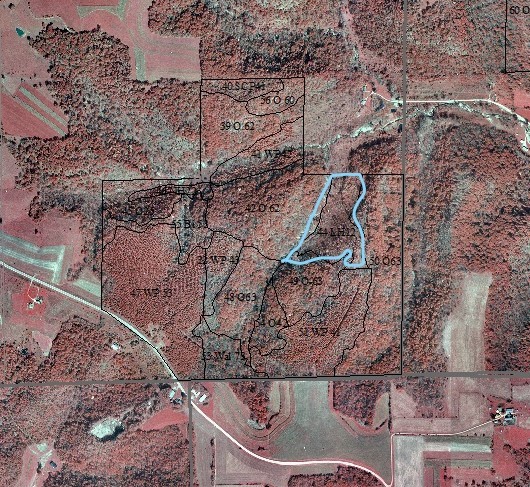
Supplemental figure 1: Color infrared aerial photo of project site and surrounding area
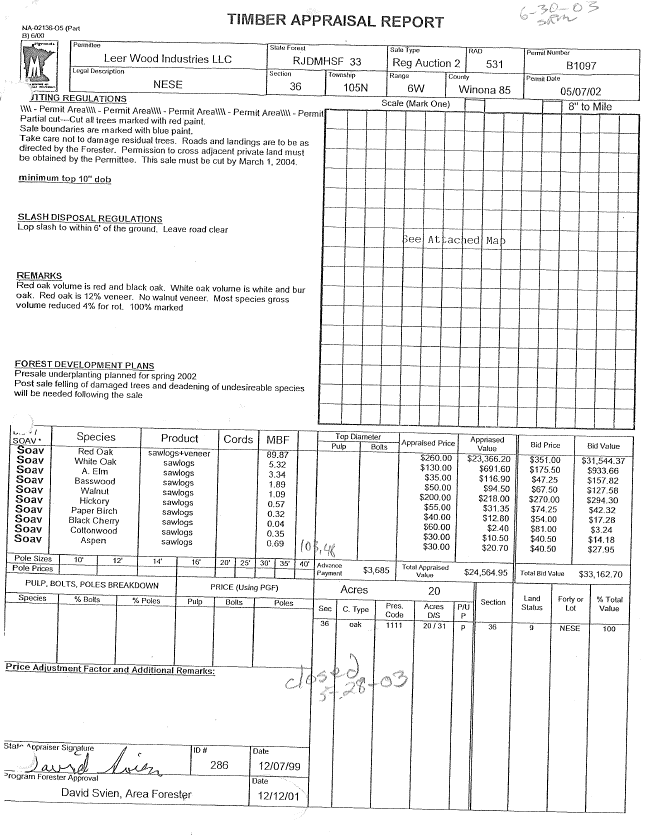
Supplemental figure 2: 2002 clearcut with reserves harvest timber permit
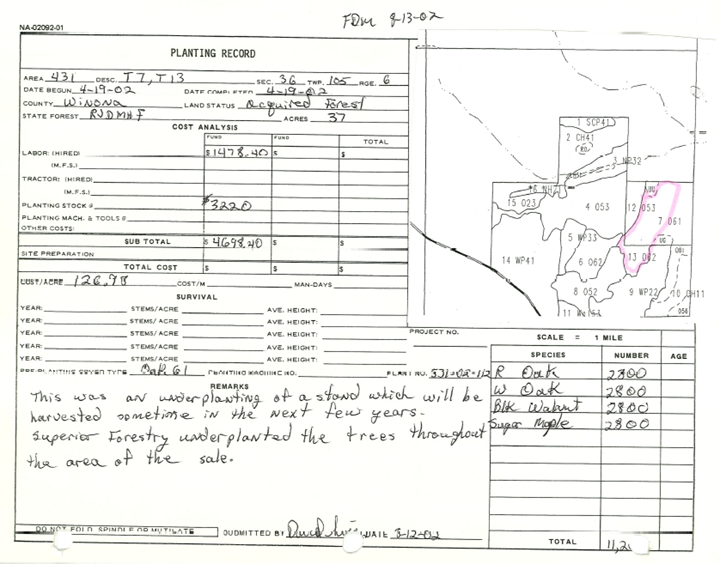
Supplemental figure 3: 2002 underplanting record
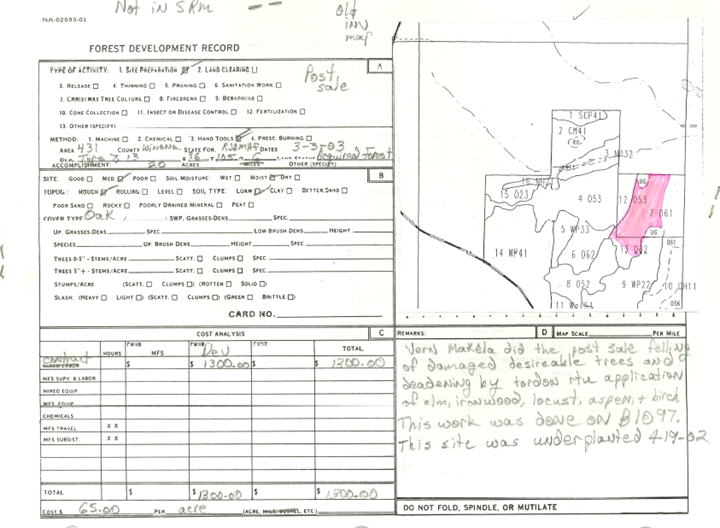
Supplemental figure 4: 2003 post-timber sale TSI record
